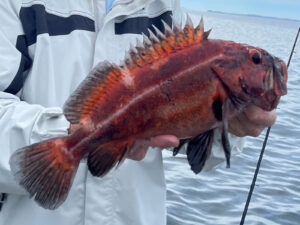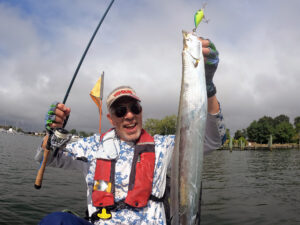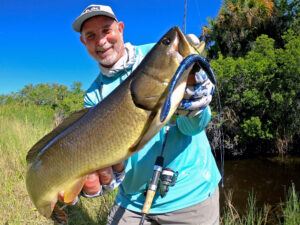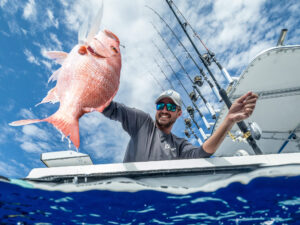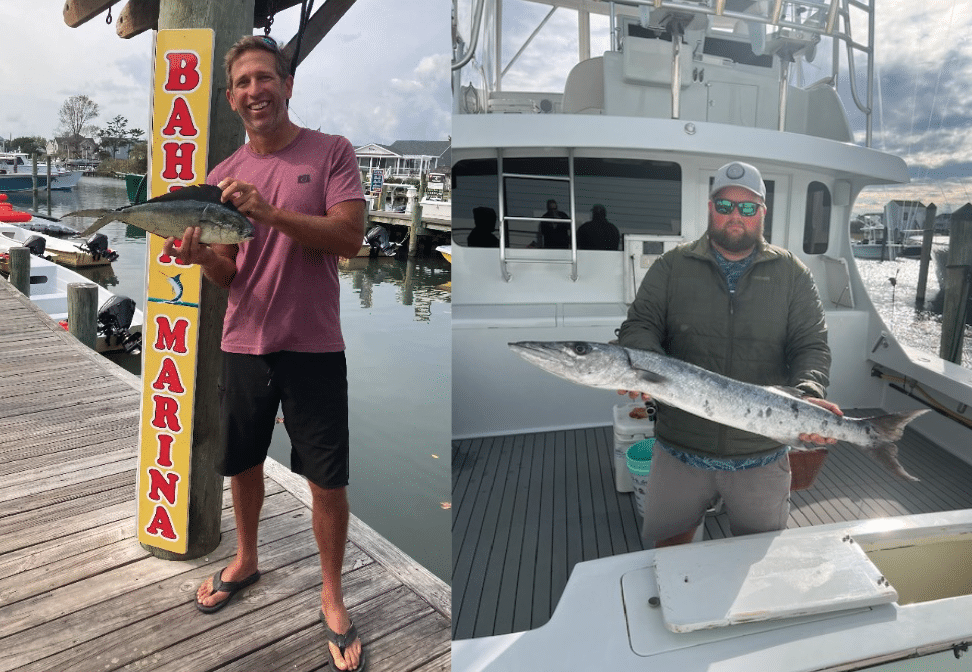
A pair of new state records have come over gunnels in the canyons off the coast of Maryland – for species that weren’t even on the books when the fish were caught. In late September, Chris Stafford of Cherry Hill, New Jersey, found himself with a rare-for-the-area species of dolphinfish; a couple weeks later, Stephen Humphrey of Elliott City, Maryland, pulled in a surprise, and sizable, barracuda.
The 52 Atlantic Ocean species on Maryland’s record list now include pompano dolphinfish and great barracuda. Neither species is unheard of in the mid-Atlantic, but typically range farther south. In the two recent cases, however, the anglers realized they had something unusual and contacted the Maryland Department of Natural Resources.
“We have received reports of these two relatively rare species being caught off Ocean City in the past, but they were never properly documented or photographed for a state record,” said Erik Zlokovitz, recreational fisheries outreach coordinator for the DNR. “We are excited to add both of these new species to the Atlantic Division of the Maryland State Fishing Records program.”
New Maryland State Record Pompano Dolphinfish
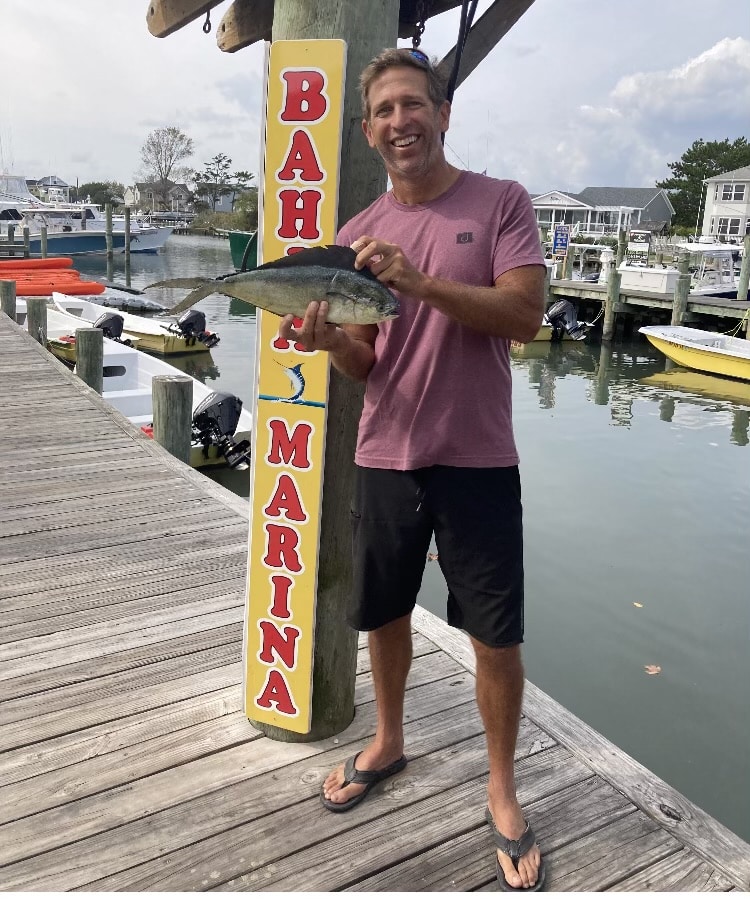
Stafford was fishing from a private boat in Poor Man’s Canyon, one of more than 70 underwater valleys along the East Coast’s continental shelf, on Sept. 21. His party had caught and released a white marlin in the morning and, and later started catching dolphinfish on their trolling gear.
“There were so many we stopped and started ‘hand-feeding’ the dolphin,” using squid chunks on bare hooks, Stafford said. “They were basically swimming around a lobster pot buoy off shore. There were 50 to 100 of them swimming around the boat.”
The pompano dolphinfish was among them. Back at the dock, the fish cleaner at Bahia Marina in Ocean City noticed the difference between the pompano dolphinfish and the more common mahi. “All the local guys around the dock were saying it’s a pompano mahi and there hadn’t been one caught in Maryland waters,” Stafford said.
Zlokovitz came and confirmed the species for Stafford’s first entry in the record books. The pompano dolphinfish weighed 2 pounds and measured 20 inches nose to fork.
New Maryland State Record Barracuda
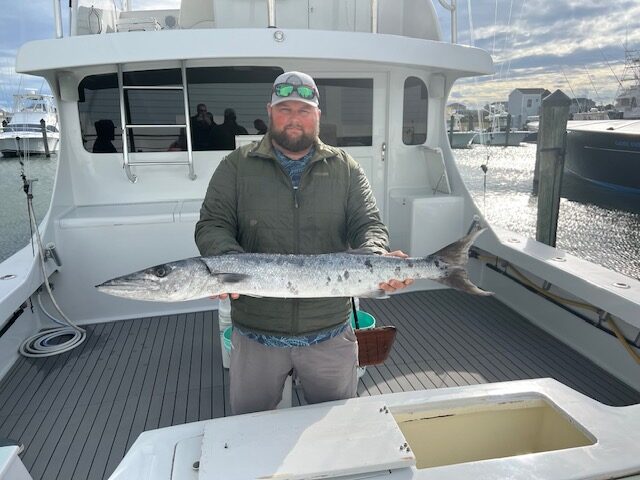
On Oct. 6, Humphrey was aboard a Wrecker Sportfishing vessel, trolling with a sea witch ballyhoo rig for yellowfin tuna in Washington Canyon, the next valley to the south. “The rod alarm went off, we brought it in, and it was a barracuda,” Humphrey said. It wasn’t his first encounter with the toothy species; he had caught them in Florida. As the fish came to the boat, “we knew right away,” Humphrey said. “Our captain, Bobby Layton, mated in Florida and has been in the industry a long time, and he knows more than most people.”
“As far as barracuda go, it’s not a big one, but it was long,” he said. “And it’s rare to catch them in Maryland.” It wasn’t exactly small, either, measuring 40 inches to the tail fork and 42 inches overall.
The DNR has noticed plenty of fish and animals that typically lived in more southern states, and says part of the reason is likely warming ocean temperatures, noting that average water temps at monitoring stations in Chesapeake Bay have increased as much as 2 degrees since the 1980s. Warm-water fish like cobia, sheepshead, red drum, and spotted sea trout are becoming more common in Maryland.
And of course, there’s the 5-foot tarpon caught on Cape Cod in late August.
Stafford, however, has observed another shift while monitoring water conditions for marlin and other species. “These last few weeks, the Gulf Stream swung a little closer than normal for our waters,” he said, noting three weeks of storms that pressed the coast with wind from the east. “It’s just a matter of that current being pushed in closer than normal.”

